Are Bengal Cats Hypoallergenic?
Are Bengal cats hypoallergenic? There is a lot of talk about whether bengal cats are hypoallergenic or not. And while the answer to that question is a little complicated, there are some things you should know about these cats before you decide if one is right for your home. In this blog post, we’ll take a closer look at what makes bengals hypoallergenic and how you can determine if one of these cats is right for you. So, if you’re considering adding a Bengal cat to your family, keep reading!
What Is Cat Allergy? Should You Take the Risk to Adopt a Potentially Allergic Cat?
Cat allergy is one of the most common pet allergies. Symptoms include sneezing, runny nose, itchy eyes, and skin rashes. Some people may also have trouble breathing. Cat allergies are caused by proteins in cat dander, saliva, and urine. These proteins can become airborne and cause an allergic reaction when they’re inhaled.
You may have your heart set on a particular type of cat, but what if that cat is at risk for allergies? There are a few things to consider before taking the plunge.
First, it’s important to understand that no one is really allergic to cats – they’re actually allergic to a protein found in a cat’s skin and saliva. This protein, called Fel d 1, is present in all cats, but some cats produce more of it than others. So, if you’re allergic to Fel d 1, you may not be equally allergic to all cats.
Second, there’s no way to know for sure whether a cat will trigger your allergies until you’re actually around it. Even if a cat comes from a hypoallergenic breed, it may still produce enough Fel d 1 to cause problems.
Finally, even if a cat doesn’t trigger your allergies, living with one can still be difficult. Allergies can cause symptoms like sneezing, watery eyes, and congestion – and they can make it hard to sleep, focus, or even breathe. If you have severe allergies, you may need to take medication just to be able to be around a cat.
So, should you take the risk and adopt a potentially allergic cat? It’s ultimately up to you – but it’s important to weigh all the factors before making a decision. Allergies are a serious matter, and they shouldn’t be taken lightly.
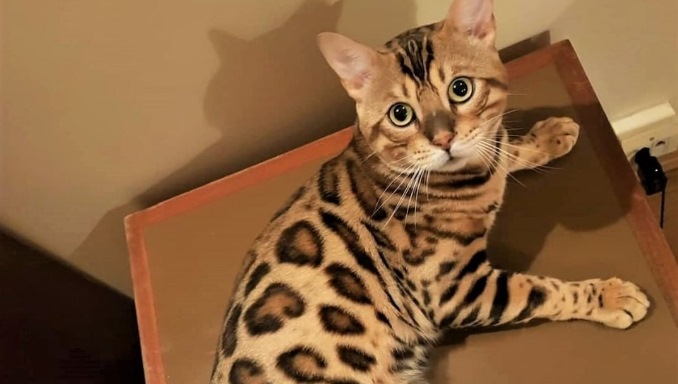
Are Bengal Cats Hypoallergenic?
The short answer to this question is that Bengal cats are not hypoallergenic. However, there are some things you should know about these cats before you decide if one is right for your home.
First, it’s important to understand that there is no such thing as a 100% hypoallergenic cat. All cats produce some level of the protein Fel d 1, which is what causes allergies in people. However, some cats produce less of this protein than others. This is what makes some cats hypoallergenic.
So, what makes a Bengal cat not hypoallergenic? It’s actually pretty simple. Bengal cats are bred from Asian Leopard Cats, which means they have a higher level of Fel d 1 protein in their bodies. This is one of the reasons why Bengal cats are not recommended for people with severe allergies.
However, it’s important to note that not all Bengal cats will cause allergies in people. It really depends on the individual cat and how much Fel d 1 protein they produce. Some Bengal cats may produce very little of this protein, while others may produce a lot.
If you’re considering adding a Bengal cat to your home, the best thing you can do is to spend some time with the cat beforehand. This will help you determine if you’re allergic to the cat and if the cat is right for your home.
How to Know If You Are Allergic to Bengal Cats?
If you have never been around Bengal cats before, it is important to know that they are a relatively new breed. As such, there is not a lot of information available about them. However, there are some things that you can look for if you think you may be allergic to Bengal cats.
One of the first things that you may notice is that you have a reaction to the cat’s fur. This can manifest itself in a number of ways, including sneezing, watery eyes, and itching. If you find that you have any of these symptoms after being around a Bengal cat, it is important to see a doctor to rule out any other possible allergies.
Another symptom of an allergy to Bengal cats is difficulty breathing. This can be particularly dangerous, as it could mean that you are having an asthma attack. If you have asthma, it is important to carry your inhaler with you at all times, just in case you have a reaction to the cat’s fur.
If you think that you may be allergic to Bengal cats, the best thing to do is to avoid them. If you must be around them, it is important to take precautions, such as wearing a dust mask and keeping your asthma medication handy. By taking these steps, you can help to reduce your chances of having a serious reaction to the cat’s fur.
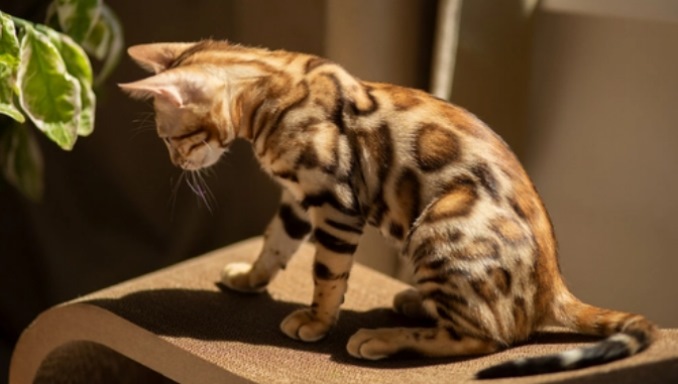
Bengal Cat – About the Breed
The Bengal cat is a relatively new breed of cat, developed only in the past few decades. Bengals are created by crossing an Asian Leopard Cat with a domestic cat. The result is a stunningly beautiful cat with a wild appearance, but a gentle and loving temperament.
There are three types of Bengal cats: the Asian Leopard Cat (ALC), the Egyptian Mau, and the domestic Bengal. The ALC is the wild ancestor of all Bengal cats. Bengals have been bred to resemble this wild cat through selective breeding. The Egyptian Mau is a domesticated cat that was used in the early stages of Bengal breeding. The domestic Bengal is the result of breeding between the ALC and the Mau.
Bengals are one of the most popular breeds of cats, and are known for their unique patterns and colors. Bengals come in a variety of colors, including brown, black, silver, and snow. They also have a range of patterns, from spots to marbled.
Bengals are medium to large cats, with males typically weighing between 15 and 20 pounds, and females between 10 and 15 pounds. They are muscular cats, with long legs and a long tail.
Bengals are intelligent and active cats, and love to play. They are also very curious, and will often explore every nook and cranny of their home. Bengals are known for being vocal cats, and will often chirp or chatter when they are happy or excited.
If you are looking for a beautiful, unique, and loving cat, the Bengal may be the perfect breed for you!
Which Bengal cat breed is the least likely to cause allergies?
There is no definitive answer to this question, as each Bengal cat is different and will produce a different amount of Fel d 1 protein. Some Bengals may produce very little of this protein, while others may produce a lot. If you’re considering adding a Bengal cat to your home, the best thing you can do is to spend some time with the cat beforehand to see if you have any reaction to its fur. You can also ask the breeder or rescue organization about the cat’s parents and grandparents to get an idea of how much Fel d 1 protein they may produce.
How to Reduce the Risk of Allergies from Bengal Cats
As anyone who has ever owned a Bengal cat can attest, these beautiful animals can be full of energy and mischief. They are also known to be very vocal, which can be both a blessing and a curse! Bengals are also considered to be one of the most allergy-prone cat breeds out there. If you’re considering adding a Bengal to your family, but are concerned about allergies, there are a few things you can do to reduce the risk.
First of all, it’s important to understand that no cat is completely hypoallergenic. All cats produces some amount of the protein Fel d 1 in their skin and saliva, which is what causes most allergies in people. However, Bengal cats tend to produce more of this protein than other breeds.
One way to reduce the risk of allergies is to choose a female Bengal cat over a male. Studies have shown that female Bengals produce less Fel d 1 than males. Another option is to look for a Bengal cat that has been spayed or neutered, as this can also help to reduce the amount of Fel d 1 protein produced.
If you’re still set on getting a male Bengal, there are a few things you can do to reduce the risk of allergies. First, have your Bengal cat tested for Fel d 1 levels before bringing him home. If he tests positive for high levels of the protein, you may want to consider allergy shots or medication before bringing him home.
Another way to reduce the risk of allergies is to keep your Bengal cat indoors. This will help to reduce his exposure to pollen and other allergens that can trigger an allergic reaction. It’s also important to vacuum and dust regularly, as Bengal cats are known to shed a lot.
If you do decide to get a Bengal cat, be sure to talk to your allergist first and make sure that you’re taking all the necessary precautions to reduce the risk of allergies. With a little bit of planning, you can enjoy the companionship of a Bengal cat without having to worry about allergies!
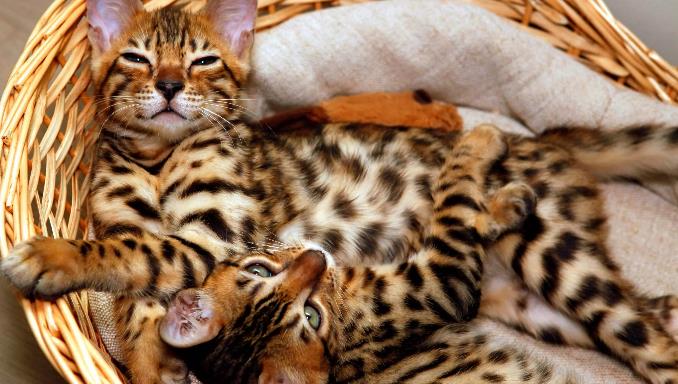
Tips to Reduce the Risk of Allergies from Bengal Cats
If you’re considering adding a Bengal cat to your family, there are some things you should know about the breed’s risk for allergies. Bengals are known for being high-energy and outgoing, and they can make great pets for families with children. However, their unique coat—which is often described as looking like a miniature leopard—can cause allergies in some people.
There are a few things you can do to reduce the risk of allergies from a Bengal cat, including:
1. Choose a hypoallergenic Bengal. While all Bengals have the potential to cause allergies, there are some that are less likely to do so. Hypoallergenic Bengals have a genetic mutation that makes them less likely to cause an allergic reaction.
2. Brush your Bengal regularly. Brushing not only helps to keep your Bengal’s coat clean and healthy, but it also helps to remove any loose hair and dander—two of the main triggers for cat allergies.
3. Keep your Bengal indoors. Bengals that live outdoors are more likely to come into contact with allergens like pollen and mold, which can trigger an allergic reaction.
4. See your doctor if you start to experience allergy symptoms. If you think you may be allergic to your Bengal, it’s important to see a doctor so they can confirm the diagnosis and help you find the best way to manage your allergies.
With a little bit of care, you can enjoy all the benefits of owning a Bengal cat without having to worry about allergies.
Do Bengal Cats Shed A Lot?
One of the most common questions people have about Bengal cats is whether or not they shed a lot. While all cats shed some fur, Bengals are known to be heavy shedders. This is due to their short, dense coats.
The best way to deal with Bengal shedding is to brush your cat regularly. This will help to remove loose fur and reduce the amount of hair that ends up on your furniture and clothing. It’s also important to vacuum regularly, as Bengal cats can shed a lot of fur.
If you’re looking for a cat that doesn’t shed much, the Bengal is probably not the best breed for you. However, if you don’t mind a little extra shedding, then a Bengal cat can make a wonderful addition to your family. Just be sure to brush him regularly and vacuum often!
How to Groom a Bengal Cat
Bengal cats are known for their beautiful, sleek coats. However, their short coats can be high-maintenance and require regular grooming.
The best way to groom a Bengal cat is to brush him daily with a soft bristled brush. This will help to remove any loose fur and prevent mats and tangles from forming. It’s also important to use a gentle shampoo when bathing your Bengal, as his fur is very delicate.
In addition to regular brushing, Bengal cats also need their nails trimmed on a regular basis. This can be done at home with a pair of cat nail trimmers, or you can take your Bengal to the groomer for a professional trim.
Bengal cats are beautiful creatures that require a bit of extra care when it comes to grooming. However, if you’re willing to put in the effort, you’ll be rewarded with a beautiful, sleek-coated cat. Just be sure to brush him daily and use a gentle shampoo when bathing.
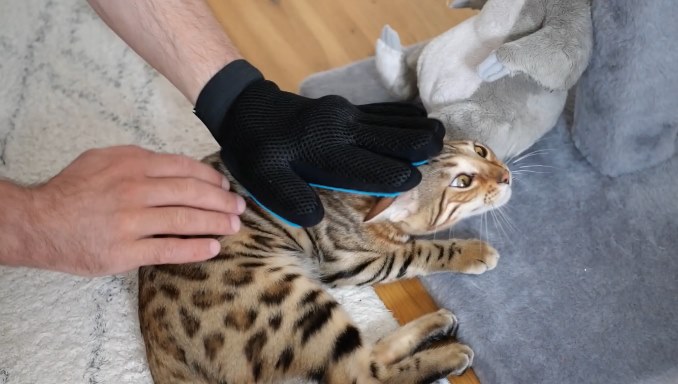
Do Bengal Cats Get Along With Other Pets?
Bengal cats are known for being very social creatures. They love to play and interact with other animals, including dogs and other cats.
However, because of their high energy levels, Bengal cats can sometimes be too much for other pets. If you have a small dog or a timid cat, you may want to consider another breed.
Bengal cats also have a high prey drive, so they may not be the best choice if you have small pets, such as rodents or birds. If you do have other pets in your home, it’s important to introduce them slowly and supervise their interactions closely.
With proper introductions and supervision, Bengal cats can get along well with other pets. However, it’s important to consider the personality of your other animals before bringing a Bengal cat into your home.
Things to Know before Raising Bengal Cats
Do you think Bengal cats are the right fit for you and your family? Here are some things to keep in mind before making the commitment to raise one of these beautiful animals.
1. Bengal cats require a lot of attention and care. They are very active and curious, which means they need plenty of toys, climbing space, and stimulation. If you’re not able to provide them with what they need, they may become bored and destructive.
2. Bengal cats are also very vocal. They love to meow and chirp, which can be cute at first but quickly becomes annoying. If you’re looking for a quiet pet, Bengal cats are probably not the right fit.
3. Bengal cats can be expensive. They are a relatively new breed and are still quite rare, which means they can cost upwards of $3,000. If you’re not prepared to spend that much on a cat, you may want to consider another breed.
4. Bengal cats require regular grooming. Their coat is very thick and can become matted easily, so you’ll need to brush them often. They also shed a lot, so be prepared to vacuum frequently.
5. Bengal cats are prone to health problems. Because they are a new breed, there is still much we don’t know about their health. However, they are known to be susceptible to certain genetic disorders, so be sure to do your research before getting a Bengal cat.
If you’re prepared to provide a Bengal cat with the care and attention they need, then they can make a wonderful addition to your family. Just be sure to do your research beforehand to make sure they are the right fit for you.
Pros & Cons of Having a Bengal Cat
There are several things to consider before getting a Bengal cat, as they require more care and attention than the average domestic cat. Bengals are also known for being very active, so if you’re not prepared for a high-energy pet, they may not be the right fit for you. However, there are many reasons why people love owning Bengal cats, and if you’re prepared to give them the care they need, they can make wonderful, loyal companions.
Here are some of the pros and cons of owning a Bengal cat:
Pros:
- Bengals are very beautiful cats, with their unique spotted or marbled coats. They come in a variety of colors, and their coats can be very striking.
- Bengals are often described as being very playful and energetic. They love to climb and explore, so they need plenty of space to run around and keep them entertained.
- Bengals form strong bonds with their owners and can be very loyal and affectionate cats. They’ll often greet you at the door when you come home and follow you around the house, wanting to be involved in everything you’re doing.
Cons:
- Bengals can be quite demanding and destructive if they’re bored or not getting enough attention. They need a lot of mental and physical stimulation, or they can become anxious and start scratching furniture or climbing curtains.
- Bengals can be quite vocal cats, and some people find their yowling and chattering annoying.
- Bengals can be pricey – they typically cost more than other domestic cat breeds.
If you’re considering getting a Bengal cat, be sure to do your research and make sure you’re prepared to provide them with the care they need. They can make wonderful, loving companions, but they’re not the right fit for everyone.
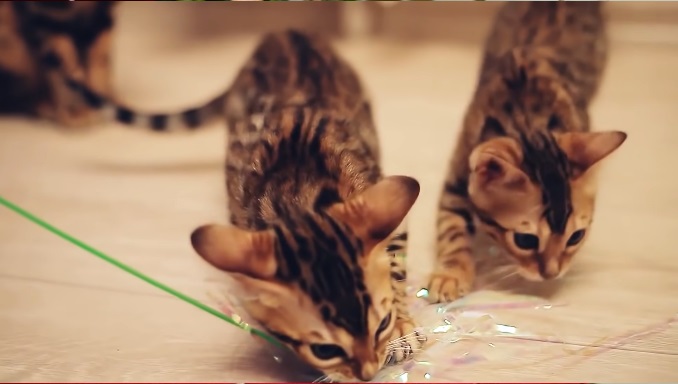
Diet of Bengal Cats
According to Bengal cat experts, the diet of Bengal cats should include:
-High quality protein: This is essential for all cats, but especially important for Bengals who are known for their high activity levels. A good quality protein will help them maintain their energy levels and keep their muscles healthy.
-Fatty acids: These are important for keeping Bengal cats’ skin and coat healthy. A diet that is deficient in fatty acids can lead to dry, itchy skin and a dull coat.
-Water: All cats need plenty of fresh, clean water to stay hydrated. Bengals are no exception. Make sure they always have access to a clean water source.
A Bengal cat’s diet should be tailored to their individual needs, and you should work with your veterinarian to ensure that they are getting all the nutrients they need.
Bengal cats: Health, Behavior, and Personality Traits
While Bengal cats appear to be relatively healthy compared to other cat breeds, there are some health conditions to which they are prone. These include:
1. Hip dysplasia: This is a condition in which the hip socket does not form properly, leading to pain and lameness. It is thought to be genetic in nature, and Bengal cats may be predisposed to it.
2. Patellar luxation: This is a condition in which the kneecap pops out of place, causing pain and lameness. It is also thought to be genetic in nature, and Bengal cats may be predisposed to it.
3. Respiratory problems: Bengal cats may be predisposed to respiratory problems due to their short noses.
4. Eye problems: Bengal cats may be predisposed to eye problems such as glaucoma and cataracts.
5. Cardiac problems: Bengal cats may be predisposed to cardiac problems such as heart disease.
Behaviorally, Bengal cats are known to be very active, playful, and curious. They are also known to be very vocal, and they may meow more than other cat breeds. Bengal cats can be trained to do tricks, and they often enjoy playing with water.
Personality-wise, Bengal cats are known to be very affectionate and loving. They are also known to be very intelligent, and they often bond closely with their human families. Bengal cats typically get along well with other pets in the home, including dogs.
FAQs about Are Bengal Cats Hypoallergenic
Are Bengal cats cuddly?
Most Bengal cats enjoy cuddling with their human families and will often purr when they are being petted. However, every cat is unique and some Bengals may not be as cuddly as others.
Do Bengal cats like to play in water?
Many Bengal cats enjoy playing in water, and some even enjoy swimming. However, not all Bengals like water, so you’ll need to introduce your cat to it gradually to see if they enjoy it.
What is the average life expectancy of a Bengal cat?
The average life expectancy of a Bengal cat is between 12 and 16 years. However, some Bengals have been known to live much longer.
Do Bengal cats need a lot of exercise?
Bengal cats are known for their high activity levels, so they do need a lot of exercise. A good way to provide your cat with exercise is to give them plenty of toys to play with and make sure they have access to a scratching post or cat tree. You may also want to consider getting a Bengal cat if you live in a house with a backyard, as they will often enjoy spending time outdoors.
Is it cruel to keep a Bengal indoors?
No, it is not cruel to keep a Bengal indoors. In fact, many Bengals prefer to live inside with their families. However, it is important to provide your cat with plenty of exercise and stimulation if they are going to be living indoors. This includes giving them plenty of toys to play with, a scratching post or cat tree, and access to a window so they can watch the outdoors.
What should I know before buying a Bengal cat?
Before buying a Bengal cat, you should be aware of their high activity levels and need for exercise. You should also be prepared to provide your cat with plenty of stimulation if they are going to be living indoors. This includes giving them plenty of toys to play with, a scratching post or cat tree, and access to a window so they can watch the outdoors. You should also be aware of the health conditions to which Bengal cats are prone, such as hip dysplasia, patellar luxation, respiratory problems, eye problems, and cardiac problems.
Do Bengal cats attach to one person?
No, Bengal cats do not attach to one person. They are usually very friendly and loving towards all members of their family. If you have a Bengal cat, it is likely that he or she will want to be around you all the time and will follow you from room to room. However, this does not mean that they do not like other people. In fact, most Bengals are very social animals and love to meet new people. If you have a Bengal cat, it is important to introduce him or her to new people on a regular basis so that they can socialize and remain happy and healthy.
Why are Bengal cats so noisy?
There are a few reasons why Bengal cats may be more vocal than other breeds. First, they are a very active breed and tend to be very curious and playful. This can lead them to be more vocal as they explore their surroundings. Additionally, Bengal cats are bred to be friendly and social, which may also lead them to be more vocal in order to get attention. Lastly, some experts believe that Bengal cats simply have a more “chatty” personality than other breeds!
Do Bengal cats like to bite?
There is no definitive answer to this question as every Bengal cat is different and each one may have their own preferences when it comes to biting. Some Bengals may enjoy biting during playtime or when they are feeling frisky, while others may only bite if they feel threatened or startled. Ultimately, it is up to the individual Bengal cat to decide whether or not they enjoy biting. If your Bengal cat does frequently bite, it is important to provide them with toys and playtime that will help redirect their biting behavior in a positive way.
How long do Bengal cats live?
Bengal cats are a relatively new breed of cat, and as such, there is not a lot of definitive information on their lifespan. However, based on the average lifespans of similar breeds, it is estimated that Bengal cats typically live between 12 and 16 years. Some individual Bengals have been known to live even longer, into their early 20s. So if you’re considering adding a Bengal cat to your family, be prepared for a long-term commitment!
Do Bengal cats purr?
Yes, Bengal cats do purr. In fact, they are known for being very vocal cats and often make a chirping sound when they purr. They also love to play and can be very active, so if you’re looking for a lap cat, a Bengal probably isn’t the best choice. Bengals are also intelligent and can be easily trained to do tricks or even walk on a leash. If you’re considering adding a Bengal to your family, be sure to do your research first as they can be a bit high-maintenance.
Do Bengal cats like to be picked up?
In general, Bengal cats do not like to be picked up and held for extended periods of time. They are much more active than other breeds of cats and prefer to explore their environment on their own terms. It is important to respect your Bengal cat’s wishes in this regard and only pick them up when absolutely necessary. When you do need to pick them up, it is a good idea to do so with two hands and provide plenty of support. Handling your Bengal cat gently and calmly will help ensure that they remain calm during the experience.
Conclusion
While there is no definitive answer to this question, it seems that bengal cats may be less likely to cause an allergic reaction than other breeds of cats. If you are considering adding a bengal cat to your family and you suffer from allergies, try spending time with one at a shelter or breeder before making your final decision. With careful attention to diet and hygiene, many people who are allergic to cats can enjoy the companionship of a bengal without any problems.
Have you ever owned a bengal cat? Do you have any tips for living with one if you’re allergic? Let us know in the comments!
Above is the article “Are Bengal cats hypoallergenic?”, Thanks for reading!









Fascinante esta experiencia. Me relaja este artículo. Fascinante esta experiencia.